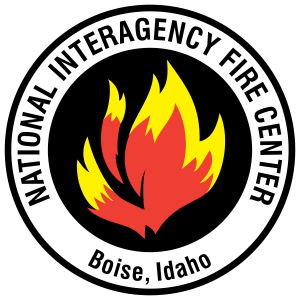Full Case Study
National Interagency Fire Center and the EGP
The National Interagency Fire Center (NIFC) is the nation’s support center for wildland firefighting. The organization’s mission is the “complex interagency coordination of wildland firefighting resources in the United States.” To support this, NIFC has created the Enterprise Geospatial Portal (EGP).
In a wildfire emergency on federal lands, NIFC is the “national dispatch center for heavy airtankers, lead planes, smokejumpers, interagency hotshot crews, type 1 incident management teams, area command teams, medium and heavy helicopters, infrared aircraft, military resources, telecom equipment for fires, Remote Automated Weather Stations (RAWS), and large transport aircraft.” There are eight different federal, state, and local agencies that are a part of NIFC. These agencies offer free access to the EGP to fire officials seeking an authoritative source of standardized geospatial information for the full range of wildfire activities. This data ranges from response to planning and allocation of resources, similarly to those mentioned above.
The EGP provides:
- Situational awareness for firefighters
- Real-time information to help first responders and decision makers
- A map-driven interface to display the impacts of wildfires
Data Analysis Before Technology Visualization
Before the implementation of the EGP in 2010, the web of agencies in charge of responding to wildfires on federal lands shared information manually, slowly, and piece-by-piece. As a result, data was often disorganized and available in pieces, distributed among multiple systems. Data was a “history lesson” due to the many hours passed before processing and sharing.
Before the availability of technology like Intterra’s GIS data visualization software, intelligence coordinators, fire professionals, legislators and reporters called into NIFC for details about ongoing fire incidents. Information requested by response personnel included data such as fire size and number of crews dispatched. Without the proper data analysis technology, manual data synthesis was a significant part of the NIFC workload. The roll out of EGP decreased calls to NIFC by 80% due to the new opportunity for self-service and on-demand data access. This reduction acts as a steward of tax dollars.
The Technology Behind the Enterprise Geospatial Portal
IN PARTERNERSHIP WITH

EGP Tools fuse and display data from disparate systems like Computer Aided Dispatch, Resource Orders, Situation Reports, and Remote Sensing to provide maps and dashboards to agencies protecting federal lands. The Enterprise Geospatial Portal (EGP) is the focal point for the fusion of all of this data.
The EGP tools currently in use include the Fire Globe, Intterra, the Incident Risk Console (RisC), and a GIS data repository. Users can access all four tools with a single login, streamlining the experience and speed reaction times. With its cutting edge technology the NIFC and EGP facilitate cross-agency collaboration and data sharing when working across geographic or administrative borders to fight big fires.
To illustrate, let’s explore a real-world example of a high-level use of the EGP system from the 2015 fire season. NIFC agencies were almost at resource capacity and new areas were continually igniting. The NIFC Operations Director needed to find out the locations of crews, hot shots, fires, and perimeters. Using the EGP, NIFC staff pulled a density map to show the locations of the fires and which crews had been dispatched. It came down to life and property. The EGP layer utilized revealed the populated areas, visualizing factors of risk and using that information to re-prioritize resources.
Benefits of the Enterprise Geospatial Interface
The EGP provides a geospatial interface, which allows users to access wildland fire data layers on a common web-based platform. Users from Fire Chiefs and administrators to firefighters on the ground have access to data stored in a central data repository, which facilitates the exchange of near-real-time information within and between land management agencies. This enables users to tweak processes, improve outcomes, and predict needs. NIFC’s National Incident Service provides a single GIS layer where all the fires and perimeters are fused together in one pane.
The EGP is currently bringing data sharing and analytics to the field of federal firefighting to enhance outcomes across a slew of individual metrics. Immediate goals for the EGP include enhancing mobile access and remote sensing platforms as well as improving analytic capability, so those who protect our beautiful federal lands can continue to use consolidated incident data to develop even better systems and tools.
The U.S. government funds the NIFC and EGP as a service for public safety. It’s free to any firefighter in the United States, helps protect federal land, and provides a service to firefighting agencies to help.

